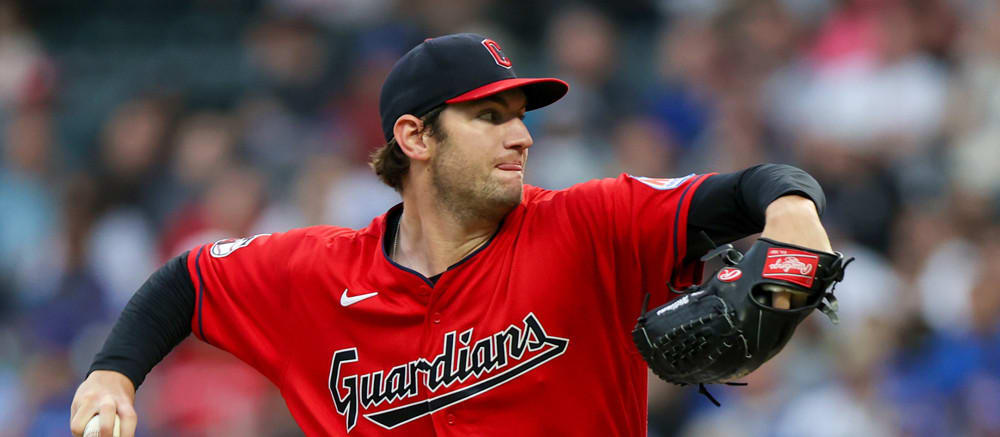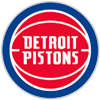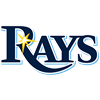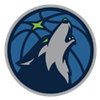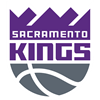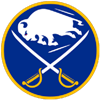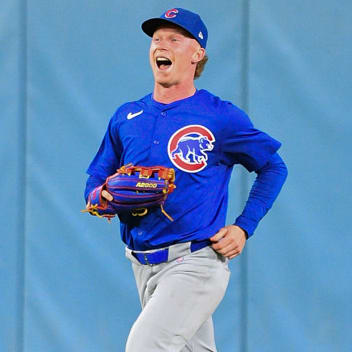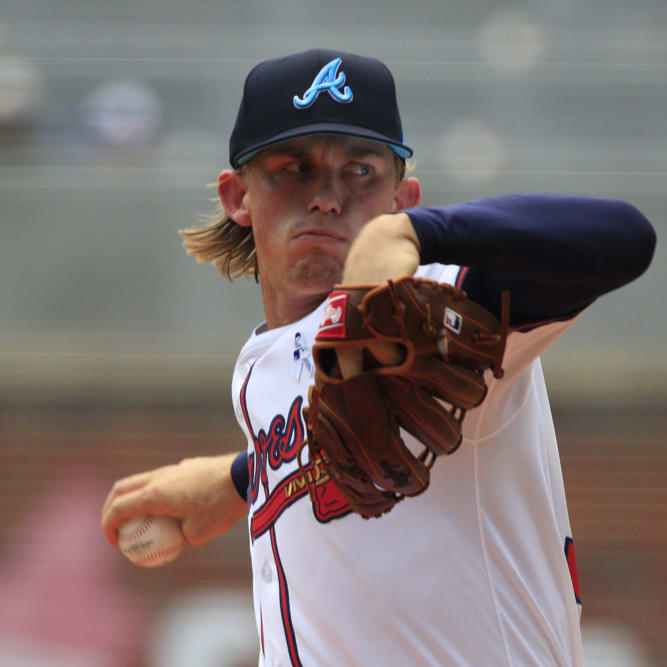We're coming up on the start of Workload Management Season. Good young pitchers who are just starting to break into the league or who have had perhaps two or three not entirely smooth seasons to start their career are increasingly being handled with caution by their teams, who want to protect as many team-controlled years as possible while doing minimal damage to their playoff odds.
It's a period which can specifically hurt those who played the fantasy game well over the first few months, as those exciting pitching call-ups you beat your leaguemates to in April and May are exactly those who are most at risk of suddenly fading from fantasy relevance. If you're like me, and you take a few more risks with your pitching staff during draft season because you back yourself to win enough of those promising rookies to paper over any holes, you could be in a tough position down the stretch.
We aren't yet at the point where these pitchers are actively dropping from rotations or seeing their pitch counts significantly curtailed, but we've reached the point where managers are starting to detail their plans for their young arms in press conferences. If you have the luxury of a spare space on your bench, it can be wise to use the time now to account for the impending shutdown (or semi-shutdown) of one of your better arms, whether that's by picking up a capable rotation fill-in now or grabbing a setup man whose ratios and
We're coming up on the start of Workload Management Season. Good young pitchers who are just starting to break into the league or who have had perhaps two or three not entirely smooth seasons to start their career are increasingly being handled with caution by their teams, who want to protect as many team-controlled years as possible while doing minimal damage to their playoff odds.
It's a period which can specifically hurt those who played the fantasy game well over the first few months, as those exciting pitching call-ups you beat your leaguemates to in April and May are exactly those who are most at risk of suddenly fading from fantasy relevance. If you're like me, and you take a few more risks with your pitching staff during draft season because you back yourself to win enough of those promising rookies to paper over any holes, you could be in a tough position down the stretch.
We aren't yet at the point where these pitchers are actively dropping from rotations or seeing their pitch counts significantly curtailed, but we've reached the point where managers are starting to detail their plans for their young arms in press conferences. If you have the luxury of a spare space on your bench, it can be wise to use the time now to account for the impending shutdown (or semi-shutdown) of one of your better arms, whether that's by picking up a capable rotation fill-in now or grabbing a setup man whose ratios and strikeouts make him an unembarrassing inclusion in your lineup despite his lack of saves.
The specific level of concern for each pitcher will become clear through team statements over the next few weeks, but as a general rule, pay attention to a pitcher's workload relative to last season as well as his team's place in the playoff race. The latter goes a long way in determining whether a team will prioritize short-term wins or long-term health. Below is a list of a handful of notable pitchers in their age-25 seasons or younger, alongside some relevant factors which could determine their usage down the stretch:
| Pitcher | Age | IP in 2022 (MLB/MiLB/playoffs) | IP in 2023 (MLB/MiLB) | Diff | Playoff Odds (FanGraphs) |
|---|---|---|---|---|---|
| Grayson Rodriguez | 23 | 75.2 | 112.1 | +36.2 | 98.1% |
| Eury Perez | 20 | 77 | 69.2 | +22.2 | 41.1% |
| Jesus Luzardo | 25 | 112 | 133.2 | +20.2 | 41.1% |
| Andrew Abbott | 24 | 118 | 130.1 | +12.1 | 26.6% |
| Johan Oviedo | 25 | 127.1 | 136.1 | +9 | 0.1% |
| Spencer Strider | 24 | 134 | 139.1 | +5.1 | 100.0% |
| Gavin Williams | 23 | 115 | 115 | 0 | 8.3% |
| Braxton Garrett | 25 | 125 | 122 | -3 | 41.1% |
| Hunter Brown | 24 | 126.1 | 123.1 | -3 | 92.3% |
| Brandon Williamson | 25 | 122.2 | 115 | -7.2 | 24.6% |
| Tanner Bibee | 24 | 132.2 | 124 | -8.2 | 8.3% |
| George Kirby | 25 | 164.2 | 144.2 | -20 | 35.7% |
| Logan Allen | 24 | 132.2 | 111.2 | -21 | 8.3% |
| Edward Cabrera | 25 | 110.1 | 89 | -21 | 41.1% |
| Josiah Gray | 25 | 148.2 | 126.2 | -22 | 0.0% |
| Bryce Elder | 24 | 159 | 137 | -22 | 100.0% |
| Bryce Miller | 24 | 133.2 | 111 | -22.2 | 35.7% |
| Graham Ashcraft | 25 | 143.1 | 120 | -23.1 | 24.6% |
| Reid Detmers | 24 | 135 | 107.2 | -27.1 | 0.8% |
| Bobby Miller | 24 | 112.1 | 83.1 | -29 | 100.0% |
| Ryne Nelson | 25 | 154.1 | 125 | -29.1 | 23.7% |
| MacKenzie Gore | 24 | 87 | 117 | -30 | 0.0% |
| Brayan Bello | 24 | 153.1 | 119.1 | -34 | 13.0% |
| Taj Bradley | 22 | 133.1 | 98.1 | -50 | 96.6% |
| Hunter Greene | 23 | 132.2 | 81.2 | -51 | 24.6% |
| Brandon Pfaadt | 24 | 167 | 115.1 | -51.2 | 23.7% |
Teams have approximately 40 games remaining, which means about eight turns in the rotation for each regular starter. With pitchers averaging 5.20 innings per start this season, that means a full workload the rest of the way is about 42 more frames. That means that any of the starters listed above who's still at least 20 innings shy of last year's total should be fine, as teams are comfortable increasing pitchers' workloads by around 25 innings per year.
Rodriguez has already cleared that mark, while both Perez and Luzardo are nearly there, putting them all at risk for significant workload management. Oviedo's shutdown could be coming very soon, with Abbott, Williamson, Garrett, Williams and Bibee all at some risk should their teams have a bad couple weeks and fall out of the race. Strider and Brown could also see their workloads managed down the stretch, with their teams' comfortable playoff position giving them the luxury to not go all-out for short-term gains.
The names on the top half of the above table are all fallers to a certain extent, as their rest-of-season projections have to drop even if their performances remain strong. For now, we'll move onto our regularly scheduled programming, a look at the players who have been rising or falling based on their numbers over the last few weeks.
RISERS
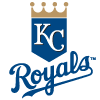 Bobby Witt, 3B/SS, Royals: I wrote Witt up a month ago, arguing that his strong expected stats and improved performance since the start of June foretold big things for his second half. Thus far, things are going exactly to plan. In 28 games since the break, he's hit .339/.376/.661 with nine homers and seven steals. He hasn't gotten any more selective, with his walk rate falling still further from 5.4 percent to 4.8 percent, but he's made more contact, cutting his strikeout rate from 20.5 percent to 14.4 percent. The approach is clearly working for him, as he owns an excellent 15.0 percent barrel rate since the break, up from an already strong 10.5 percent in the first half. Thanks in part to his 34 steals (fourth in MLB), he's well on his way to earning his lofty draft-day price, as he now sits sixth in earned auction value. That was unlikely to happen without the step forward he's taken at the plate, as the player who's hit .315/.358/.545 (143 wRC+) since June 1 looks very different than the one who hit .247/.286/.429 (95 wRC+) over the first eight months of his MLB career.
Bobby Witt, 3B/SS, Royals: I wrote Witt up a month ago, arguing that his strong expected stats and improved performance since the start of June foretold big things for his second half. Thus far, things are going exactly to plan. In 28 games since the break, he's hit .339/.376/.661 with nine homers and seven steals. He hasn't gotten any more selective, with his walk rate falling still further from 5.4 percent to 4.8 percent, but he's made more contact, cutting his strikeout rate from 20.5 percent to 14.4 percent. The approach is clearly working for him, as he owns an excellent 15.0 percent barrel rate since the break, up from an already strong 10.5 percent in the first half. Thanks in part to his 34 steals (fourth in MLB), he's well on his way to earning his lofty draft-day price, as he now sits sixth in earned auction value. That was unlikely to happen without the step forward he's taken at the plate, as the player who's hit .315/.358/.545 (143 wRC+) since June 1 looks very different than the one who hit .247/.286/.429 (95 wRC+) over the first eight months of his MLB career.
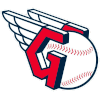 Gavin Williams, SP, Guardians: Among the large group of starting pitchers who debuted this season, Williams ranked near the top on most preseason prospect lists. His late-June debut probably would have gotten more attention if not for the unusual number of rookie pitchers whom we'd already burned all our FAAB budgets on over the prior two months. While his 3.74 ERA through his first six big-league starts was entirely respectable, his 5.04 xFIP told another story, as both his 18.6 percent strikeout rate and 10.7 percent walk rate were poor. Over his last four outings — a stretch which has included matchups against the Astros, Blue Jays and Rays — he's come alive, posting a 1.29 ERA while striking out 40.2 percent of opposing batters. The last two of those outings have both seen him strike out at least half the batters he faced. That's the type of run you hope to see from a highly-rated prospect with a big frame (6-foot-6) and a big fastball (95.9 mph). As noted above, Williams has exactly matched his innings total (115) from last season, which does unfortunately put him at risk of being handled very cautiously in September, especially if the Guardians fall further out of the race, but his recent run bodes very well for his long-term prospects.
Gavin Williams, SP, Guardians: Among the large group of starting pitchers who debuted this season, Williams ranked near the top on most preseason prospect lists. His late-June debut probably would have gotten more attention if not for the unusual number of rookie pitchers whom we'd already burned all our FAAB budgets on over the prior two months. While his 3.74 ERA through his first six big-league starts was entirely respectable, his 5.04 xFIP told another story, as both his 18.6 percent strikeout rate and 10.7 percent walk rate were poor. Over his last four outings — a stretch which has included matchups against the Astros, Blue Jays and Rays — he's come alive, posting a 1.29 ERA while striking out 40.2 percent of opposing batters. The last two of those outings have both seen him strike out at least half the batters he faced. That's the type of run you hope to see from a highly-rated prospect with a big frame (6-foot-6) and a big fastball (95.9 mph). As noted above, Williams has exactly matched his innings total (115) from last season, which does unfortunately put him at risk of being handled very cautiously in September, especially if the Guardians fall further out of the race, but his recent run bodes very well for his long-term prospects.
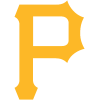 Ke'Bryan Hayes, 3B, Pirates: Hayes has long been a player who offered more value in real life than in fantasy, producing 3.0 fWAR last year despite hitting .244/.314/.345 with just seven homers. He's always hit the ball hard, posting a 47.5 percent hard-hit rate for his career, giving him the potential to be a complete player if he could just learn to lift the ball. Slowly but surely, he's beginning to do that, while also starting to pull the ball more frequently:
Ke'Bryan Hayes, 3B, Pirates: Hayes has long been a player who offered more value in real life than in fantasy, producing 3.0 fWAR last year despite hitting .244/.314/.345 with just seven homers. He's always hit the ball hard, posting a 47.5 percent hard-hit rate for his career, giving him the potential to be a complete player if he could just learn to lift the ball. Slowly but surely, he's beginning to do that, while also starting to pull the ball more frequently:
| Year | Average Launch Angle | Groundball Rate | Pull Rate | Hard Hit Rate |
|---|---|---|---|---|
| 2021 | 2.6 | 56.7% | 24.2% | 45.1% |
| 2022 | 5.2 | 49.4% | 27.0% | 46.8% |
| 2023 | 13.2 | 42.1% | 30.3% | 49.1% |
| League Average | 12.8 | 42.5% | 40.9% | 39.3% |
As the rightmost column indicates, Hayes isn't sacrificing his ability to make impact as he attempts to get the ball in the air more often, and he's in fact continued to make small gains in that regard. We're still not talking about someone whose batted-ball profile screams "power hitter," particularly with Hayes still pulling the ball far less than most batters, but he's at least reached league average in terms of his ability to lift the ball. That's been particularly notable over his last nine games, a stretch in which he's hit .417 while homering three times to bring his season total to career-high eight. If he adds a handful more to his tally down the stretch, it will be easier to envision him jumping all the way to 20 and beyond next season, something which could be in play with his revamped batted-ball profile.
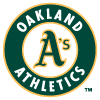 Zack Gelof, 2B, Athletics: Oakland tore down so completely and left so much playing time up for grabs that someone was bound to come along eventually and do something interesting with it. Esteury Ruiz of course has watchability to spare, but beyond that, the most interesting things happening in Oakland are a late-twenties breakout (if you can call a 1.0-WAR season thus far a "breakout") from Brent Rooker and Ryan Noda's refusal to do anything except walk or strike out. Gelof has only been up for 28 games, but his .294/.353/.633 slash line suggests he might be a real part of the next competitive A's team. We should pump the brakes a bit, because it's taken a .353 BABIP to get him to that line, but even if his average falls to meet his .251 xBA, he's shown enough power to be productive. Gelof's 27.7 percent strikeout rate and 6.7 percent walk rate definitely represent sub-par discipline, but they're not such terrible marks that they'll prevent him from having success if he can maintain his 14.5 percent barrel rate. Plus, as a 23-year-old, he's hardly a finished product, and the Athletics can afford to give him plenty of time to work on his weaknesses at the big-league level. Eight homers and seven steals thus far puts him on pace for 40 and 35, respectively, over 600 plate appearances, so he doesn't even have to improve his plate discipline to be quite a useful fantasy option.
Zack Gelof, 2B, Athletics: Oakland tore down so completely and left so much playing time up for grabs that someone was bound to come along eventually and do something interesting with it. Esteury Ruiz of course has watchability to spare, but beyond that, the most interesting things happening in Oakland are a late-twenties breakout (if you can call a 1.0-WAR season thus far a "breakout") from Brent Rooker and Ryan Noda's refusal to do anything except walk or strike out. Gelof has only been up for 28 games, but his .294/.353/.633 slash line suggests he might be a real part of the next competitive A's team. We should pump the brakes a bit, because it's taken a .353 BABIP to get him to that line, but even if his average falls to meet his .251 xBA, he's shown enough power to be productive. Gelof's 27.7 percent strikeout rate and 6.7 percent walk rate definitely represent sub-par discipline, but they're not such terrible marks that they'll prevent him from having success if he can maintain his 14.5 percent barrel rate. Plus, as a 23-year-old, he's hardly a finished product, and the Athletics can afford to give him plenty of time to work on his weaknesses at the big-league level. Eight homers and seven steals thus far puts him on pace for 40 and 35, respectively, over 600 plate appearances, so he doesn't even have to improve his plate discipline to be quite a useful fantasy option.
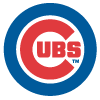 Jeimer Candelario, 3B, Cubs: Candelario debuted with the Cubs in 2016 but was traded away the next season for a pair of players who had minimal impact on the team's failed quest to repeat, with backup catcher Alex Avila and lefty reliever Justin Wilson involved in a combined three plate appearances during the subsequent postseason. Candelario had some good years and some bad ones during his five seasons in Detroit, but his .239/.320/.401 slash line (99 wRC+) would have left the Cubs without too many regrets about dealing him away. They elected to bring him back at this year's deadline as they push to get back into the playoffs, and the early returns have been outstanding, as he owns a 1.060 OPS through his first 12 games since the deal. That line comes with a .500 BABIP, but it's more than just a BABIP-inflated couple of good weeks that earns him a spot here. He's been rising since a couple months before the trade, hitting .285/.376/.569 in his last 38 games prior to the move. Even including Candelario's early-season struggles, his 128 wRC+ is the second best mark of his career, trailing only his 140 wRC+ from the shortened 2020 season.
Jeimer Candelario, 3B, Cubs: Candelario debuted with the Cubs in 2016 but was traded away the next season for a pair of players who had minimal impact on the team's failed quest to repeat, with backup catcher Alex Avila and lefty reliever Justin Wilson involved in a combined three plate appearances during the subsequent postseason. Candelario had some good years and some bad ones during his five seasons in Detroit, but his .239/.320/.401 slash line (99 wRC+) would have left the Cubs without too many regrets about dealing him away. They elected to bring him back at this year's deadline as they push to get back into the playoffs, and the early returns have been outstanding, as he owns a 1.060 OPS through his first 12 games since the deal. That line comes with a .500 BABIP, but it's more than just a BABIP-inflated couple of good weeks that earns him a spot here. He's been rising since a couple months before the trade, hitting .285/.376/.569 in his last 38 games prior to the move. Even including Candelario's early-season struggles, his 128 wRC+ is the second best mark of his career, trailing only his 140 wRC+ from the shortened 2020 season.
FALLERS
 Alex Lange, RP, Tigers: Those who went with Lange as their budget closer of choice can't complain too much about what he's provided this season. His 17 saves tie him for 18th in the league, and he was the 23rd reliever off the board in the NFBC Main Event. He may not add many more saves to his tally, however, as a string of poor performances has seen him removed at least temporarily from the ninth inning. From July 25 through Aug. 7, he gave up runs in three of his five appearances, with his 7:10 K:BB looking particularly worrisome. He's since rebounded with a pair of scoreless outings, striking out three while walking one, but the damage may already have been done to his place in the Tigers' bullpen hierarchy. Since Lange's last save on July 23, four different Detroit relievers — Tyler Holton, Beau Brieske (twice), Jose Cisnero and Jason Foley — have recorded a save, while Lange's last two outings have come in the seventh inning. Lange's past success in the closer role makes him perhaps the favorite should the Tigers eventually go back to a traditional setup, though his 18.4 percent walk rate is a major worry. Plus, the Tigers aren't likely to generate all that many save chances the rest of the season, so it might not be worth waiting for Lange to turn things around.
Alex Lange, RP, Tigers: Those who went with Lange as their budget closer of choice can't complain too much about what he's provided this season. His 17 saves tie him for 18th in the league, and he was the 23rd reliever off the board in the NFBC Main Event. He may not add many more saves to his tally, however, as a string of poor performances has seen him removed at least temporarily from the ninth inning. From July 25 through Aug. 7, he gave up runs in three of his five appearances, with his 7:10 K:BB looking particularly worrisome. He's since rebounded with a pair of scoreless outings, striking out three while walking one, but the damage may already have been done to his place in the Tigers' bullpen hierarchy. Since Lange's last save on July 23, four different Detroit relievers — Tyler Holton, Beau Brieske (twice), Jose Cisnero and Jason Foley — have recorded a save, while Lange's last two outings have come in the seventh inning. Lange's past success in the closer role makes him perhaps the favorite should the Tigers eventually go back to a traditional setup, though his 18.4 percent walk rate is a major worry. Plus, the Tigers aren't likely to generate all that many save chances the rest of the season, so it might not be worth waiting for Lange to turn things around.
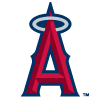 Mickey Moniak, OF, Angels: Even when things were going well for Moniak, his success looked tenuous. Through his first 50 games, he hit .335 with 11 homers, but that came with a 30.9 percent strikeout rate and a 3.1 percent walk rate. Here's the full list of players (min. 300 PA) who have finished a season with a strikeout rate north of 30 percent and a walk rate under four percent in the last decade:
Mickey Moniak, OF, Angels: Even when things were going well for Moniak, his success looked tenuous. Through his first 50 games, he hit .335 with 11 homers, but that came with a 30.9 percent strikeout rate and a 3.1 percent walk rate. Here's the full list of players (min. 300 PA) who have finished a season with a strikeout rate north of 30 percent and a walk rate under four percent in the last decade:
| Year | Player | BB% | K% | AVG/OBP/SLG | wRC+ |
|---|---|---|---|---|---|
| 2014 | Mike Zunino | 3.6% | 33.2% | .199/.254/.404 | 87 |
| 2022 | Chad Pinder | 3.7% | 31.1% | .235/.263/.385 | 86 |
| 2021 | Jorge Alfaro | 3.5% | 31.8% | .244/.283/.342 | 72 |
| 2017 | Adam Rosales | 3.5% | 32.1% | .225/.260/.353 | 58 |
| 2019 | John Hicks | 3.9% | 32.7% | .210/.240/.379 | 57 |
Not exactly an illustrious group, but Moniak's inability to get going at the big-league level prior to this season meant that his 50-game run was nonetheless encouraging. It showed that he had at least one MLB-level skill (power), and if he held onto most of that power while improving his plate discipline to more palatable levels, he could have a bright future. Rather than improve his plate discipline, however, he took a big step in the other direction, striking out 44.8 percent of the time to go along with a 3.0 percent walk rate over his last 17 games. With his BABIP collapsing from .446 in his 50-game hot streak to .235 during his latest run, his slash line fell all the way to .138/.164/.215. Given that his brief run of success came with such a major caveat, he's going to have to turn things around dramatically over the final six weeks if he's to be an interesting sleeper next season.
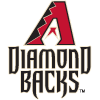 Jake McCarthy, OF, Diamondbacks: McCarthy was a popular sleeper pick this spring, but even his big supporters (myself included) knew that he came with much more risk than was typical for a player drafted in his range (an ADP of 107.3 in the NFBC Main Event). The risk came from the fact that while his speed and glove were legitimate, his 116 wRC+ in 99 games last season wasn't supported by his projections, his scouting reports or his underlying numbers. The thought was that he could run enough to offset a modest step back at the plate, and while he's gotten close to achieving that (he's still been worth positive value in 15-team leagues), his bat has deteriorated to the point that he was demoted for the second time this season Monday. His second stint this season was on the whole better than his first, with his slash line rising from .143/.229/.238 to .278/.356/.361, and you can make the case that his 99 wRC+ during that latter run should have been enough (when combined with his speed and defense) to keep him around as a part-timer. A .403 OPS over his last 13 games didn't help him, however, and he's now on the outside looking into a crowded Arizona outfield, having provided plenty of reason to doubt that he's a legitimate everyday player at the MLB level.
Jake McCarthy, OF, Diamondbacks: McCarthy was a popular sleeper pick this spring, but even his big supporters (myself included) knew that he came with much more risk than was typical for a player drafted in his range (an ADP of 107.3 in the NFBC Main Event). The risk came from the fact that while his speed and glove were legitimate, his 116 wRC+ in 99 games last season wasn't supported by his projections, his scouting reports or his underlying numbers. The thought was that he could run enough to offset a modest step back at the plate, and while he's gotten close to achieving that (he's still been worth positive value in 15-team leagues), his bat has deteriorated to the point that he was demoted for the second time this season Monday. His second stint this season was on the whole better than his first, with his slash line rising from .143/.229/.238 to .278/.356/.361, and you can make the case that his 99 wRC+ during that latter run should have been enough (when combined with his speed and defense) to keep him around as a part-timer. A .403 OPS over his last 13 games didn't help him, however, and he's now on the outside looking into a crowded Arizona outfield, having provided plenty of reason to doubt that he's a legitimate everyday player at the MLB level.
 Elehuris Montero/Michael Toglia/Brenton Doyle, Rockies: Colorado began the year with little in terms of established MLB talent and tore down still further at the deadline. They've also had Kris Bryant unavailable for most of the second half. In other words, this is the ideal situation for a fringe MLB player to take a small step forward and take advantage of his playing time and park to become a surprisingly useful fantasy option. I've included all three of these players here because they've all so utterly failed to do so, particularly since the All-Star break. Here are their second-half performances:
Elehuris Montero/Michael Toglia/Brenton Doyle, Rockies: Colorado began the year with little in terms of established MLB talent and tore down still further at the deadline. They've also had Kris Bryant unavailable for most of the second half. In other words, this is the ideal situation for a fringe MLB player to take a small step forward and take advantage of his playing time and park to become a surprisingly useful fantasy option. I've included all three of these players here because they've all so utterly failed to do so, particularly since the All-Star break. Here are their second-half performances:
| Player | PA | BB% | K% | AVG/OBP/SLG | wRC+ | HR | SB |
|---|---|---|---|---|---|---|---|
| Elehuris Montero | 64 | 4.7% | 42.2% | .213/.250/.393 | 56 | 3 | 0 |
| Michael Toglia | 89 | 5.6% | 34.8% | .157/.213/.253 | 11 | 2 | 1 |
| Brenton Doyle | 97 | 4.1% | 42.3% | .165/.216/.275 | 17 | 2 | 3 |
Ordinarily, whoever's stumbled into playing time over the last six weeks at Coors Field is worth a look in deeper leagues, but this year's Rockies team is so poor that it's hard to recommend anyone in that category. Montero, Toglia and Doyle are all 25 years old, so there's still time for them to develop a bit more, but their plate discipline in particular has been so far from acceptable that it would be hard to look their way even as streaming options in weeks in which the Rockies have seven home games.


